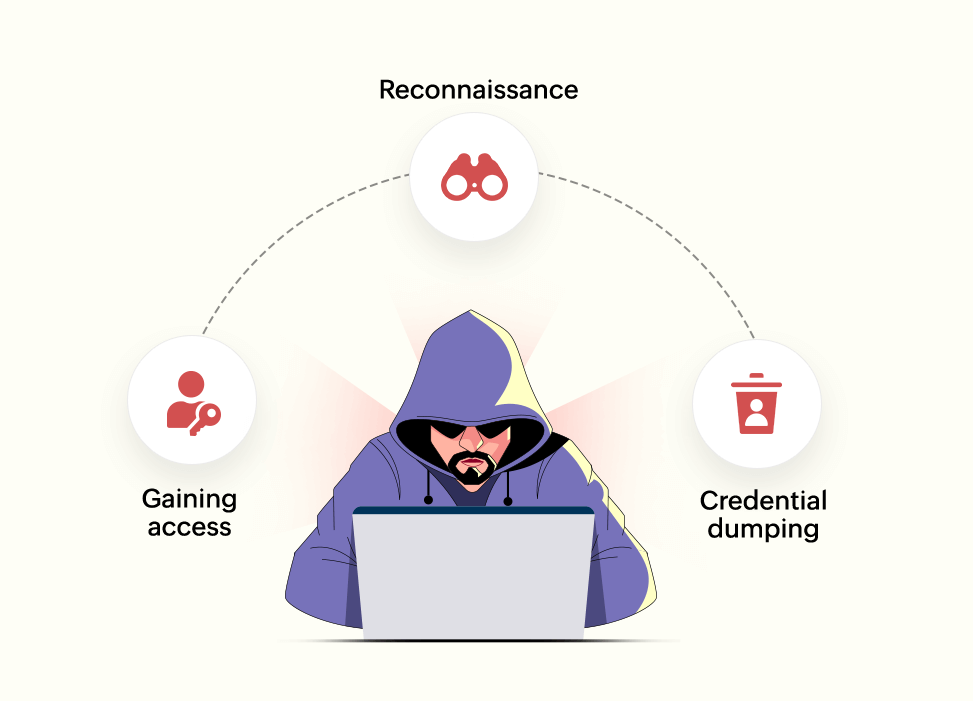Lateral movement in cybersecurity is a technique where attackers, after intruding into an organization's network, escalate privileges, exploit vulnerabilities, and more, to gain further access to assets and resources.
Lateral movement is not an attack by itself, but a stage leading up to an attack. Attackers use that initial access to compromise other accounts in the network to create a massive impact. It's a tactic predominantly used in APTs whereby the attacker stays in the network undetected for an extended period of time to gain access to more valuable assets or resources.
To stay hidden, the attacker moves laterally through the network slowly and in stages. The movement can be divided into three stages:

Every move by an attacker is carefully planned to go undetected. Reconnaissance is the first stage of lateral movement. Once the threat actor has gained a foothold into the network, they gather information on the network, its devices, and users. This helps them tactically move through the network without raising suspicion.
These are a few tools and techniques that attackers may use for reconnaissance:
This is the second stage of lateral movement. Once the attacker gains access to the network and has studied it thoroughly, they will then attempt to elevate their privileges. This means that the attacker uses privilege elevation techniques to gain access to user accounts and devices to move laterally through the network.
Some of the common lateral movement techniques include:
If the attacker manages to evade the security controls in place and elevate their privileges within the network, they're eventually able to gain access to the desired sensitive data. Since the attacker does this using legitimate credentials, they can avoid detection.
Lateral movement attacks are hard to detect because they use attack techniques that look like a legitimate network event, which allow them to stay undetected in the network for a long period.
Organizations should implement the principle of least privilege in which users are granted access to only what's required. The lesser privilege an account has, the more difficult it is for the attacker to gain access to their desired resource.
The implementation of MFA for systems, resources, and data is recommended. It is an additional layer of security that helps to prevent brute-force attacks and other password attacks.
It is good practice to segment the network into smaller sub-networks, each with its own set of protocols and policies, to prevent lateral movement within the network.
Organizations should enforce a strong password policy for systems and accounts to protect privileged accounts from possible attempts at lateral movement.
SIEM solutions can help prevent lateral movement, as they correlate data to identify any event that stands out. A solution that has behavioral analytics is even better for this purpose. It will collate data from all endpoints and use ML capabilities to establish a baseline for normal behavior, instantly alerting admins of any activity out of the ordinary.
Downloaded the FBI Checklist Ebook
Zoho Corporation Pvt. Ltd. All rights reserved.